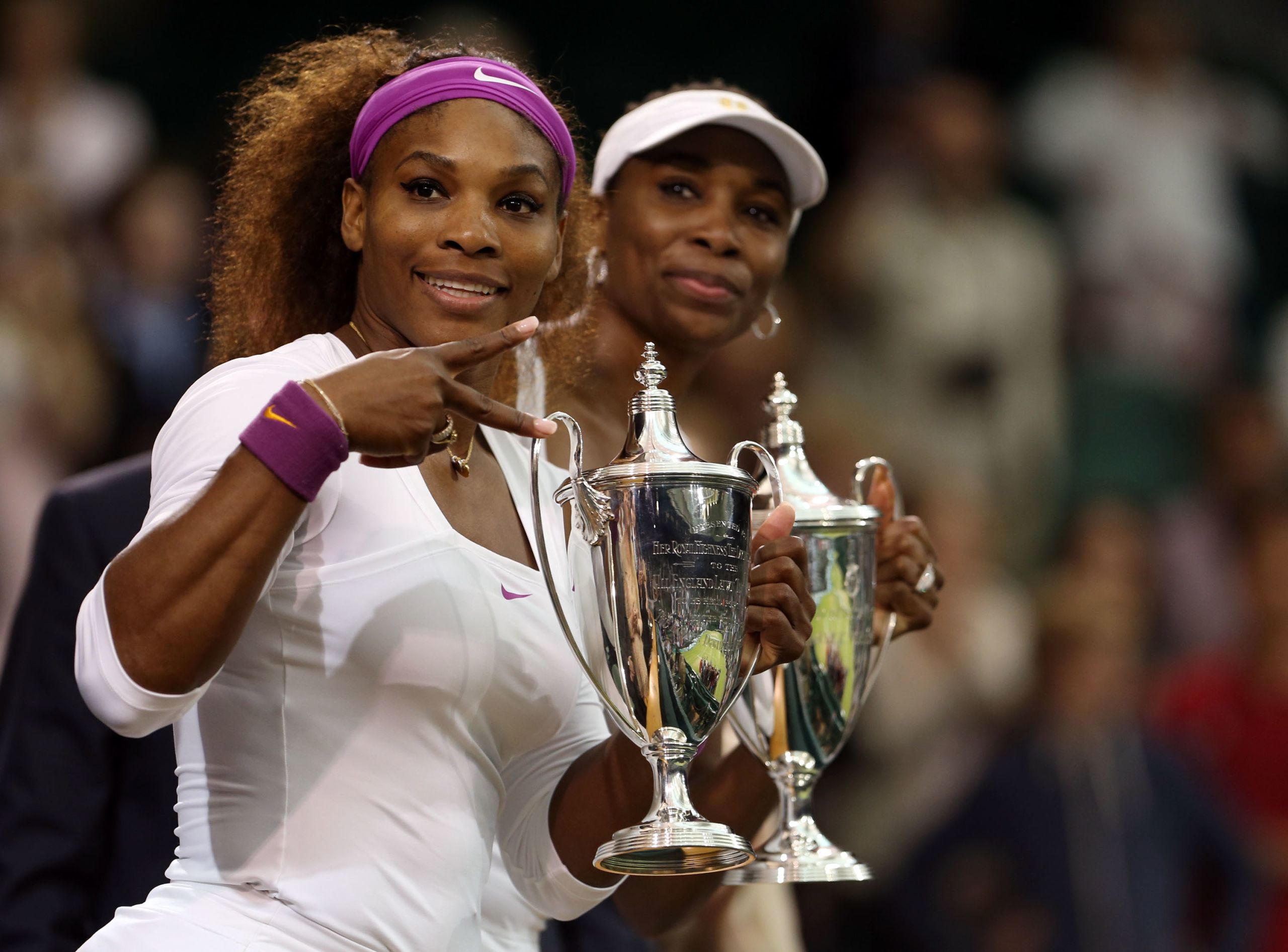The Williams sisters’ two decades of Wimbledon superiority owe to their athletic brilliance and dedication as well as the finely manicured grass courts that are ideally suited to their game.
- Richard Williams, a man who personifies the word irrepressible, brought a sign to the 2000 Wimbledon ladies’ singles final that he kept under wraps on Centre Court until just the right moment.
- Ruling the court…
- Golden girls of tennis…
- “We were able to break the and win a lot of grand slams and change the face of tennis… when tennis was very dominated by white people. It doesn’t matter what your background is and where you come from, if you have dreams and goals, that’s all that matters.”
Richard Williams, a man who personifies the word irrepressible, brought a sign to the 2000 Wimbledon ladies’ singles final that he kept under wraps on Centre Court until just the right moment.
Minutes after his elder daughter Venus won a tie-break to complete a straight-set victory over Lindsay Davenport and earn her first major title, he held aloft the sign while dancing atop the broadcast booth occupied by the American network NBC.
“It’s Venus’s Party,” the sign read.
Two years later on Centre Court, Richard Williams displayed another sign, this time before the championship match between Venus and his other daughter Serena – who were then the No 1 and No 2 players in the world.
“It’s the Williams’s Party, and You’re Not Invited,” the impish message read.


Since the turn of the century, Williams’ daughters have used an awe-inspiring combination of speed, quickness, power, athleticism and intelligence to turn the famed Centre Court into their own party palace.
The most successful sister act in the history of sport has dominated The Championships like no other siblings could have even dreamt. Serena and Venus’ superiority on the grass courts has become as much a staple of the Wimbledon fortnight as strawberries and cream.
In 16 of the past 20 years at Wimbledon, at least one Williams sister has played for the ladies’ championship. In four of those title matches, Venus, the elder sister by 15 months, has faced Serena.
The younger sister leads 3-1.
Serena was only 16 when she won the family’s first Wimbledon trophy – partnering Max Mirnyi of Belarus to the mixed doubles title in 1998.
The sisters have earned six doubles titles together at The Championships (2000, 2002, 2008, 2009, 2012 and 2016) along with an Olympic doubles gold medal at London 2012. The Olympics at Wimbledon also cemented Serena’s pre-eminence in the sport.
She annihilated old foe Maria Sharapova 6-0 6-1 to capture the gold medal in singles.
That Serena, a seven-time Wimbledon singles champion, and Venus, a five-time Wimbledon champion, are black women in a sport that was closed to blacks at the highest level for generations has made their achievements that much more remarkable.
The Williams sisters’ decades of winning at Wimbledon owe to their athletic brilliance and dedication as well as the finely manicured grass courts that are ideally suited for them.
Grass-court tennis rewards powerful serves and groundstrokes, speed and quickness, crisp volleys, exceptional defensive skills and the acumen to play the right shot at the right time.
Serena and Venus, at the height of their careers, had an enviable supply of those skills. Even now, as tennis legends in their twilight years, the sisters have enough weapons to defeat any foe on Wimbledon grass on any given day.
Their supremacy at tennis’ premier event has been so consistent while the names and playing styles of their opponents have changed – from Lindsay Davenport, Martina Hingis, Justine Henin and Amelie Mauresmo to Maria Sharapova, Angelique Kerber and Marion Bartoli to today’s superstars such as Simona Halep, Naomi Osaka and Bianca Andreescu.
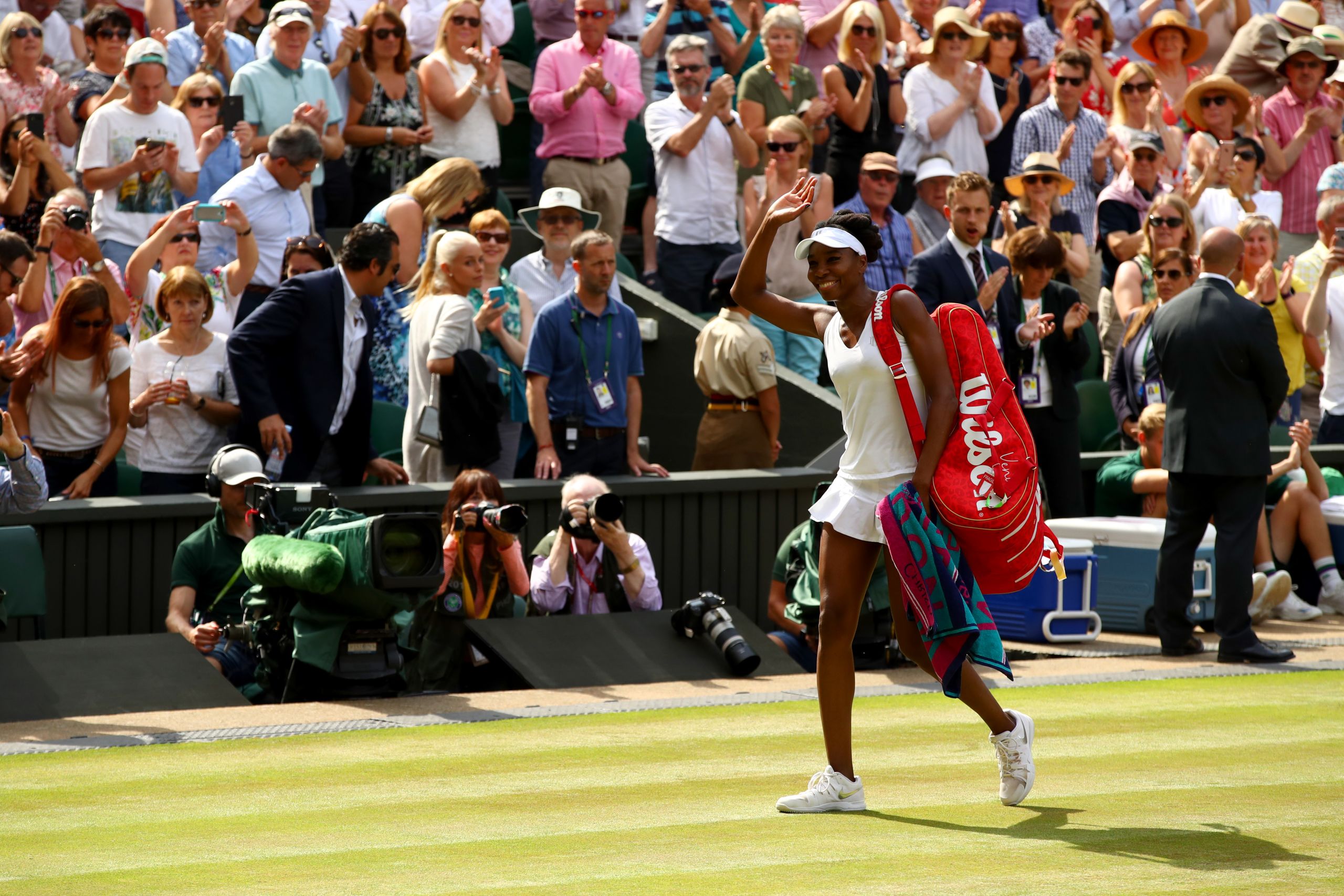
Venus and Serena have been so successful at Wimbledon for so long that when they lose a final, as Venus did to Garbiñe Muguruza in 2017, as Serena did to Kerber in 2018 (less than a year after the birth of her daughter) or as Serena did to Halep last year, the media have reason to include such words as “Stun,” “Shock” and “Surprise” in their headlines.
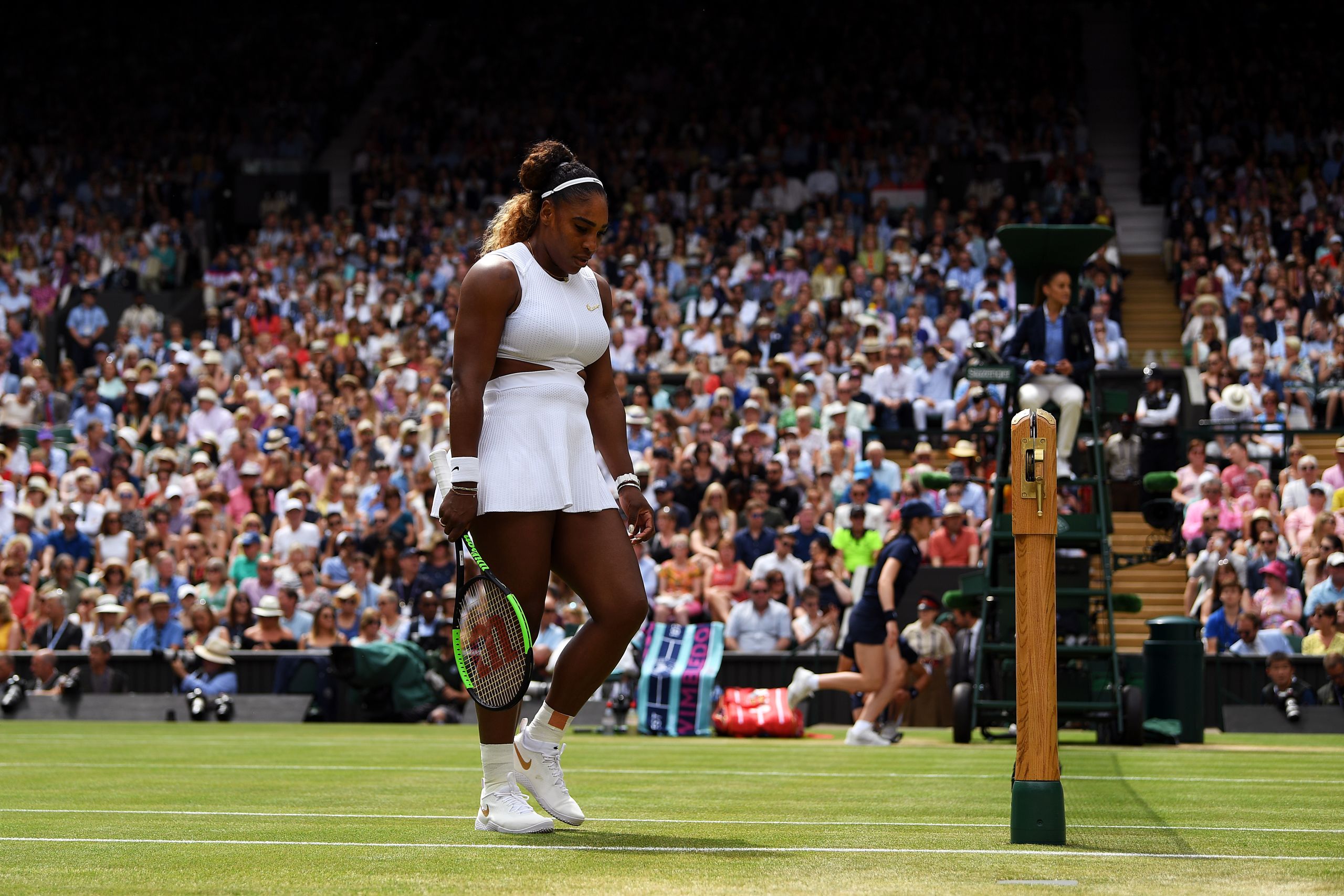
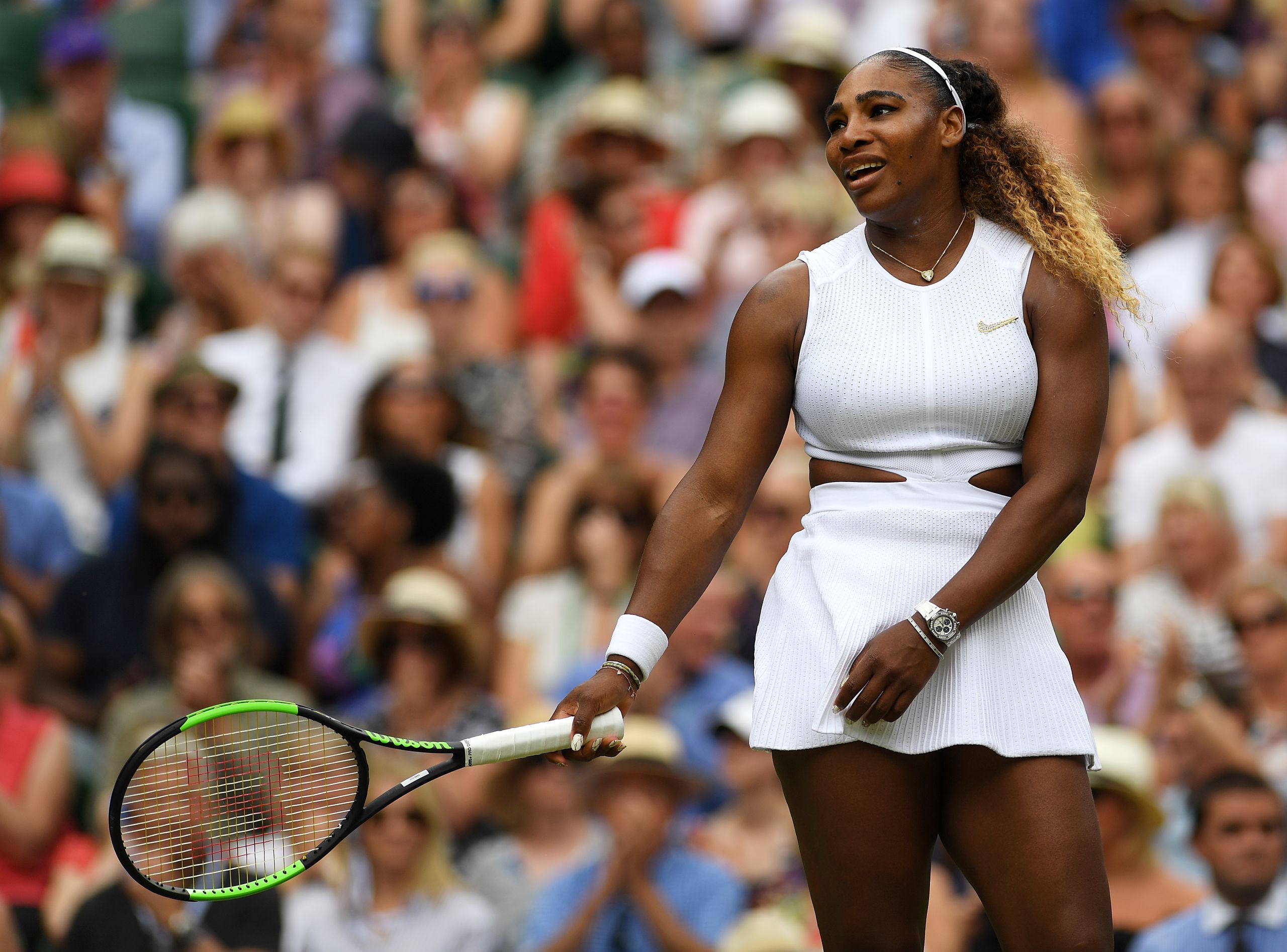
Often, the most challenging victory for an athlete is the one everyone expects her to achieve. That may be what has plagued Serena lately: She is 0-4 in Grand Slam finals since becoming a mother. Her 23 titles at Grand Slam events are one shy of Margaret Court’s all-time record. However, Serena holds the record for the most major titles by any player in the Open era (since 1968).
Venus has won seven major titles in singles, giving the Williams sisters a seemingly unconquerable 30 Slams. All this from a family that had no tennis background.
Ruling the court…
Sixteen of the past 20 Wimbledon ladies’ singles finals have featured at least one of the Williams sisters.
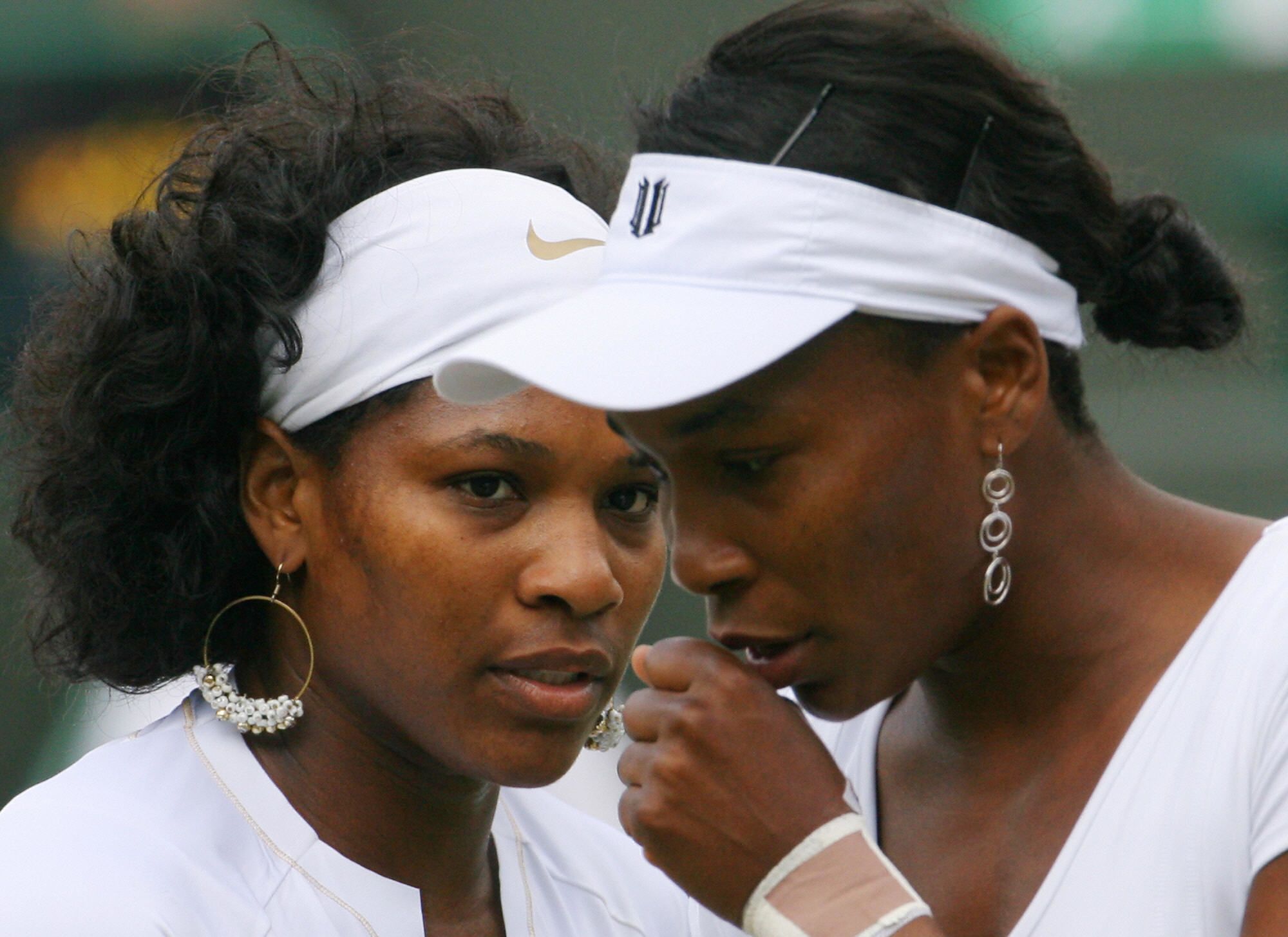
One Sunday afternoon in 1977, Richard Williams watched on television as Virginia Ruzici of Romania received a cheque for $40,000 for winning the now-defunct Eckerd Open in Palm Harbour, Florida. The image compelled him to set an insanely ambitious goal: produce a pair of daughters who would change the tennis world.
“I found myself fantasising about my as-yet unborn daughters playing tennis,” he wrote in a 2014 autobiography, Black and White: The Way I See It. “If one woman could win that much money, I wanted two daughters to play that game. Double the winnings!”
Venus and Serena were home-schooled by their mother Oracene Price, a nurse by trade. The sisters say their lives were enhanced by learning at home and becoming a close-knit family. (Price had three daughters before marrying Williams.)

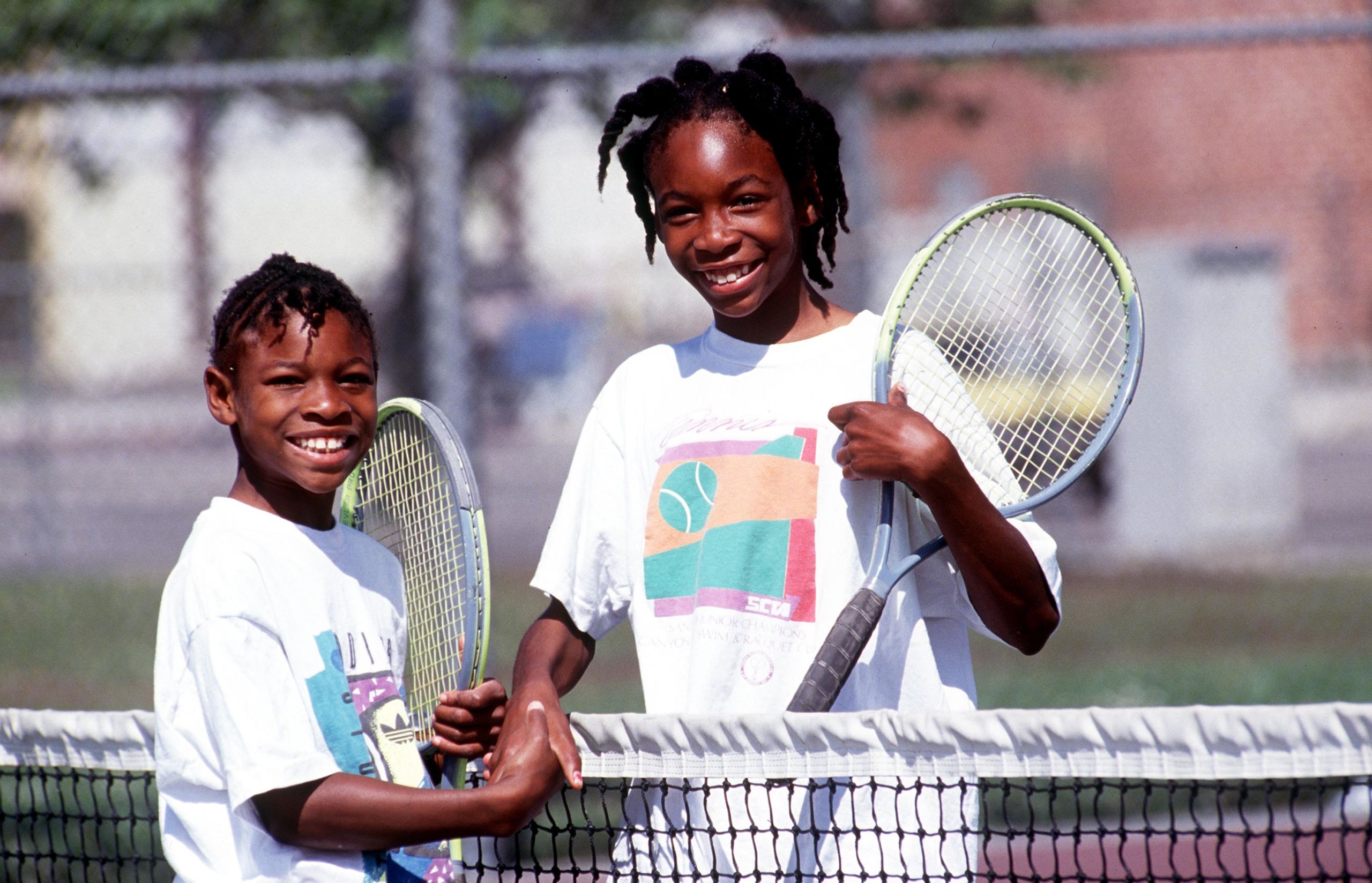
Whenever Serena or Venus needed someone with whom to study, go shopping or practice tennis, the other sister was always there. Indeed, having a gifted sister as a hitting partner and friendly competitor undoubtedly accelerated both girls’ learning and development.
Serena and Venus played few junior tournaments, not only because they had each other, but also to shield them from the kind of cronyism and stage-door parenting that often exists in junior tennis. Instead, Williams and Price instilled such confidence in their daughters that they believed they could achieve anything their hearts desired.
Williams bought tennis books and videos to teach himself and his wife the basics of the sport. He said he also took tennis lessons from a neighbourhood player in hardscrabble Compton, California, a “Mr Oliver” who insisted on being paid in whiskey. According to Williams, Mr Oliver died before Venus or Serena began to make indelible marks on tennis’ grandest stages.
Fans at Wimbledon and other tournaments around the world have become used to watching Serena battle Venus. (Serena leads the series, 18-12.) When this century began, the matches between two black sisters in a predominantly white sport were an athletic and cultural phenomenon.
In the early years of the “sister act,” as Venus-Serena match-ups are known, the tennis sometimes lacked drama because of the striking similarities in their playing styles. The sisters knew each other’s games so well that there were no secrets. It seemed impossible for one sister to surprise the other with a kick serve, a chipped return, a forehand slice, a drop volley, a two-hander crosscourt or any other weapon in their arsenals.
Venus attained the world No 1 ranking in February 2002. Five months later, when Serena defeated Venus in straight sets in the Wimbledon final, she became No 1 for the first time. When Serena held all four major titles simultaneously after her triumph at the 2003 Australian Open, she had done so by defeating her sister in all four finals.

Golden girls of tennis…
Venus and Serena have faced each other in four finals, with Serena winning three. The sisters also reigned in the 2012 Olympics at Wimbledon: Serena won gold in singles and partnered Venus to gold in doubles.
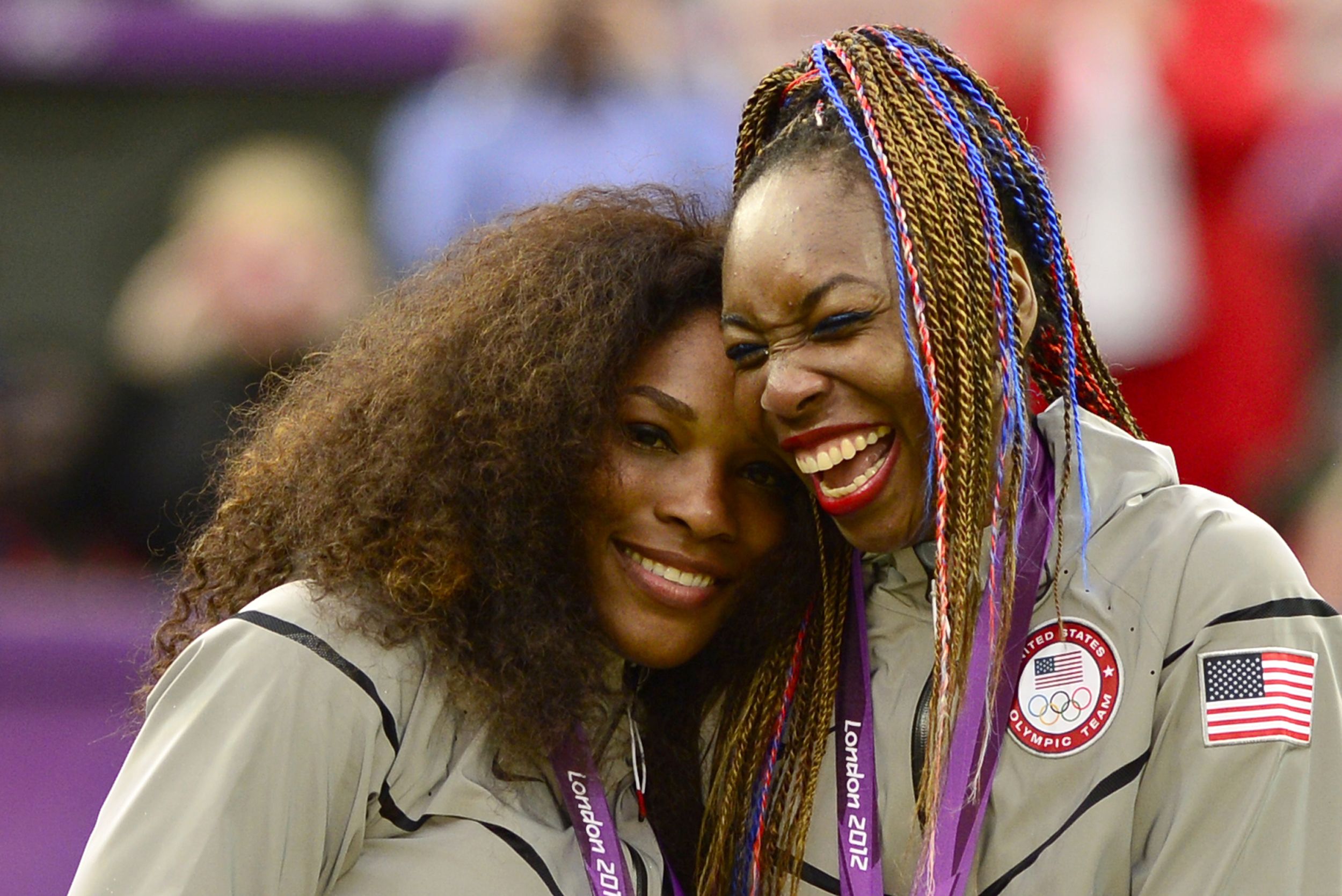
There is no on-court celebration after a sister act; the winner clearly feels remorse about beating her sister. When Venus defeated Davenport in the 2005 Wimbledon final, she resembled a human pogo stick bouncing on Centre Court. That would never be her reaction after beating Serena. But as time passed, Venus and Serena have become more comfortable playing against each other.
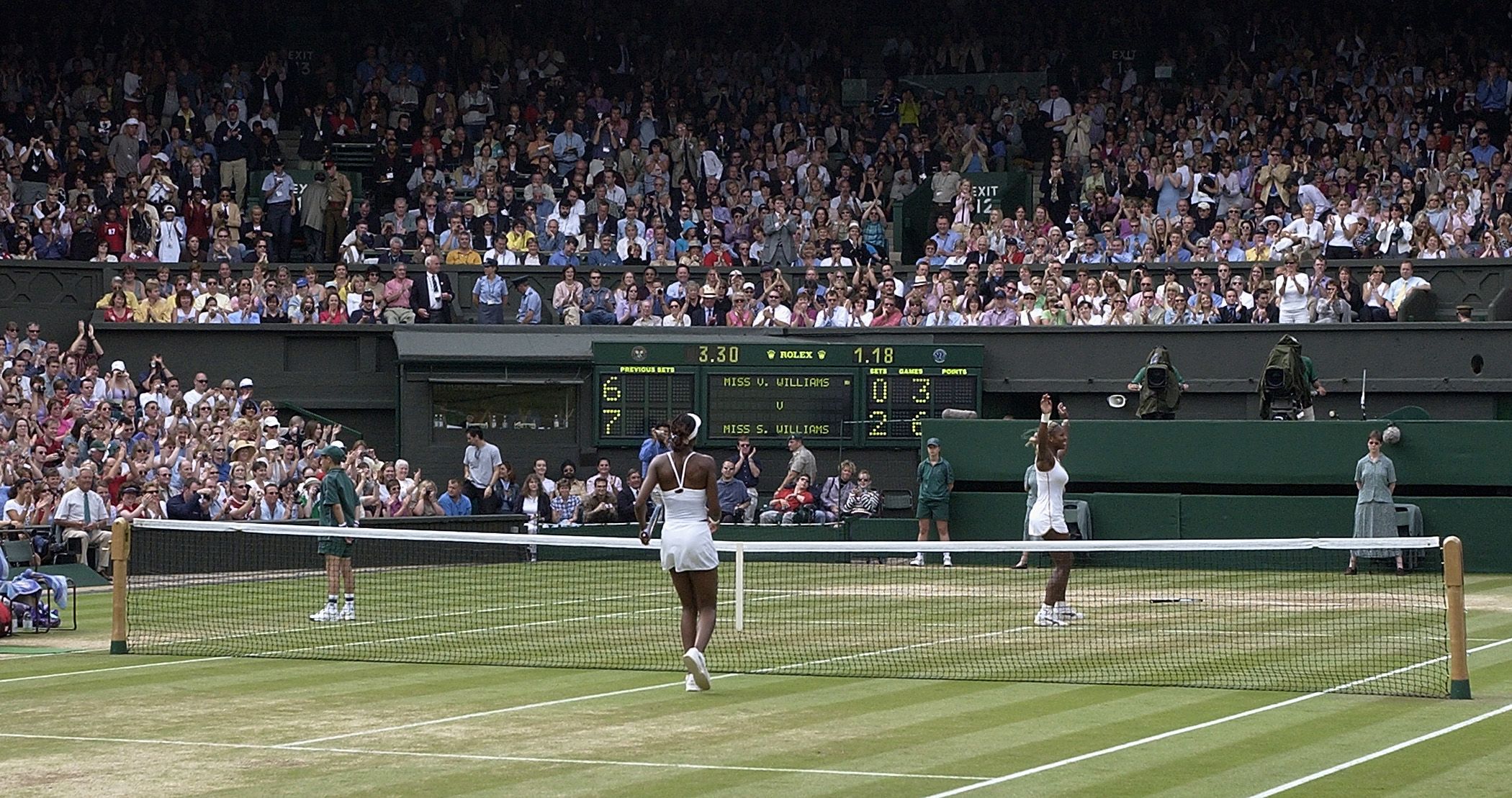
“It’s totally different now,” Serena said after she beat Venus at the 2018 US Open. “I feel like we want it so bad now. I mean, we wanted it really bad when we were younger, but we had a lot more years in our future.”
As fans have come to know the sisters’ on-court personalities, they have found it easier to root for one versus the other.
Venus, for instance, would never utter an obscenity or smash a racket on court. She continues to gain admirers for soldiering on despite being diagnosed in 2011 with Sjogren’s syndrome, an autoimmune disease that causes fatigue and joint pain. Six years after that diagnosis, she reached the Wimbledon ladies’ final. She earned more prize money in 2017 than any other player on the WTA tour ($5,468,741) and finished in the world top five for the first time since 2010.
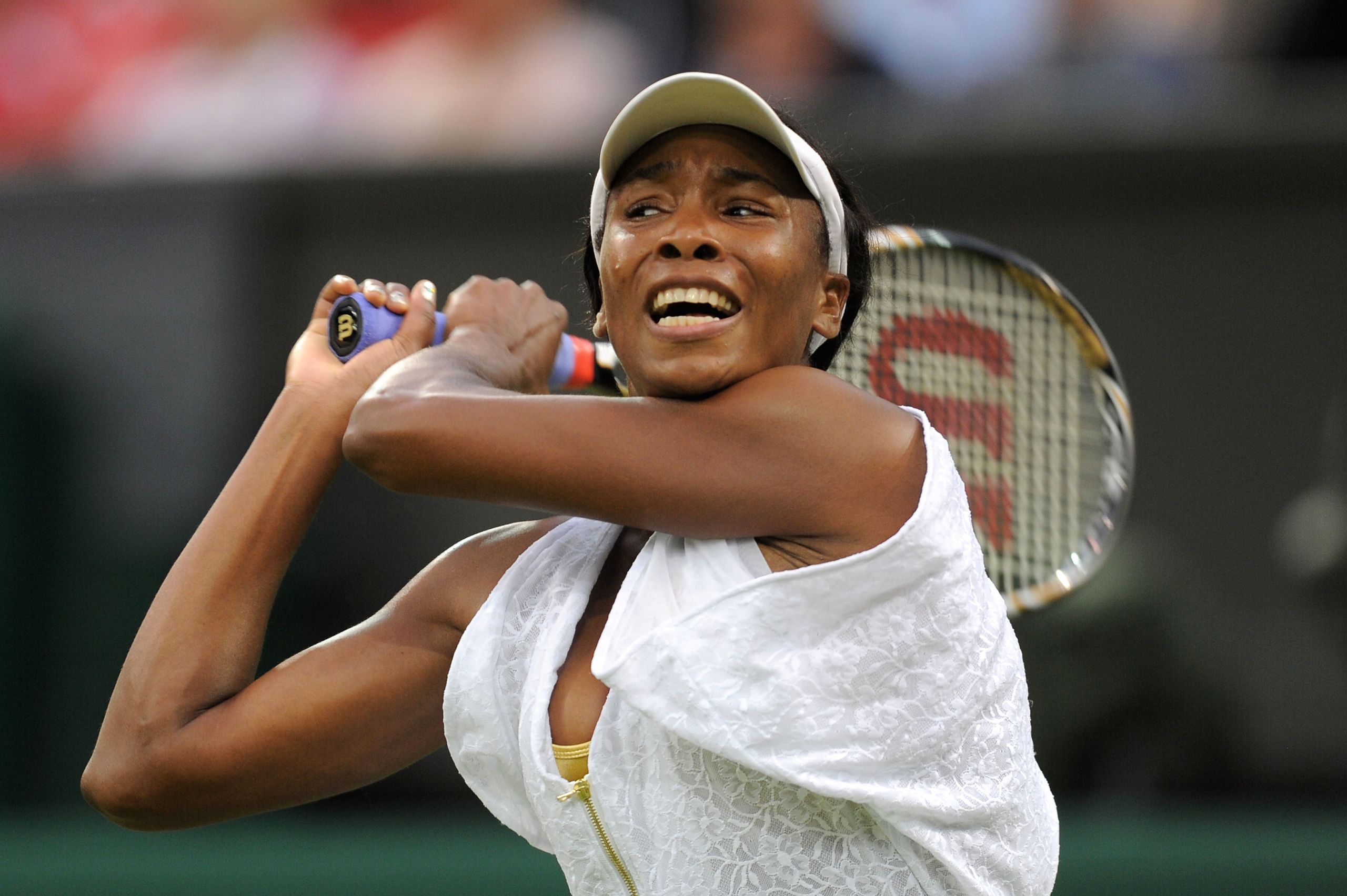
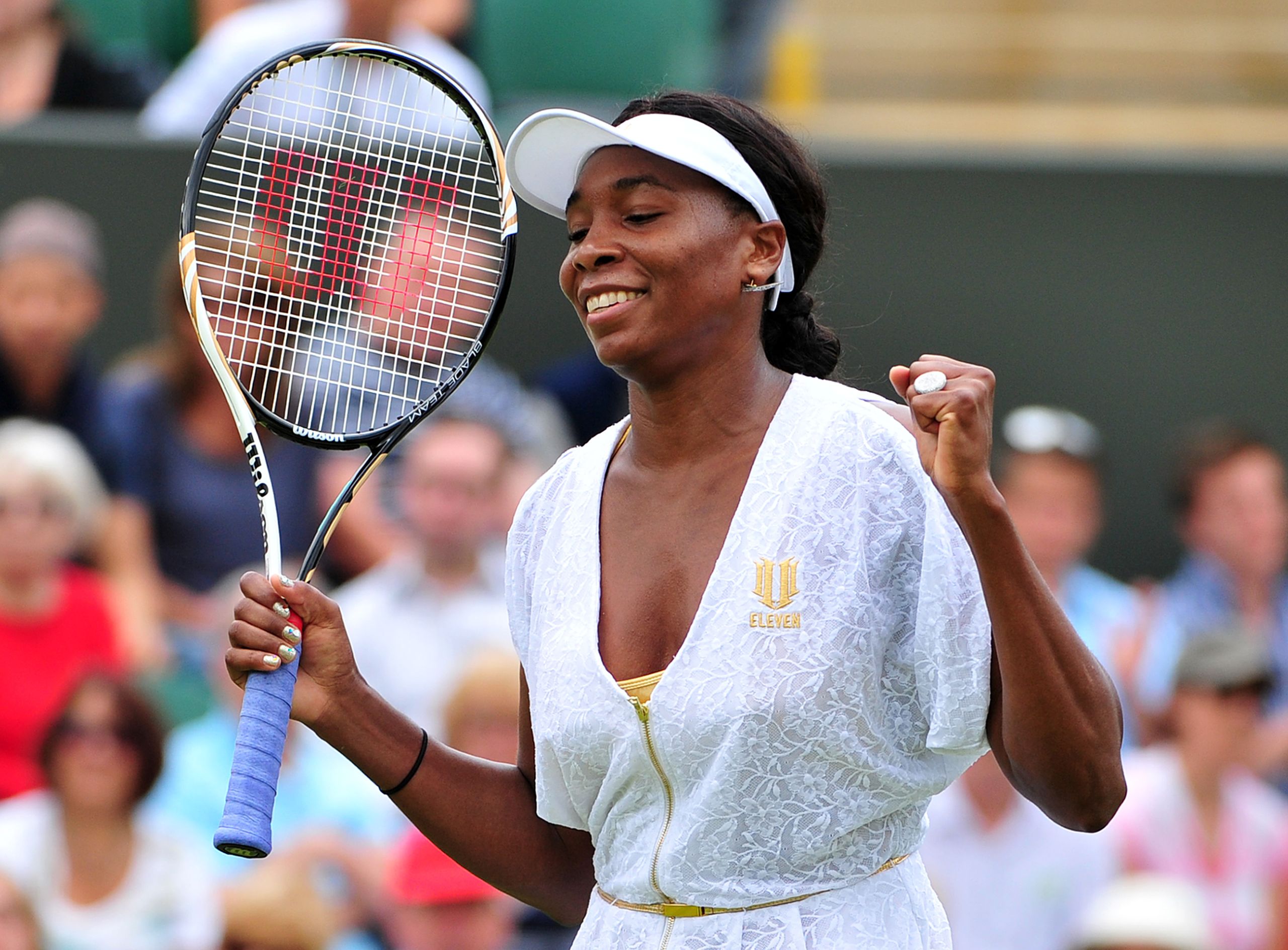
Serena fans tend to be more fervent, more enthralled by an A-game that is like no other in women’s tennis history.
Serena’s serve has long been the sport’s most dominant weapon. Yet aside from the serve, her on-court intensity and competitive fire are unmatched. As much as she loves to win, she hates to lose even more. There is nothing genteel about the sound of a Serena match – her full-throated roars of “Come on!” often punctuating her winning shots – and her fans would not have it any other way.
Wimbledon has not been witness to the racket-smashing and verbal outbursts we have seen from Serena at other tournaments, which may speak to her reverence for tennis’ most prestigious event. She usually performs with more concentration and controlled aggression on Centre Court.
It is no accident, then, that her seven titles at The Championships are the most she has won at any Grand Slam event. Fans at Wimbledon have almost always been treated to Serena’s highest level of tennis.
Venus turned 40 on June 17 and Serena will be 39 on September 26. Perhaps Father Time will do what decades of opponents could not – end the most dominant run by any siblings in Wimbledon history.
But if you think the Williams sisters are ready to reminisce and discuss their extraordinary careers in the past tense, think again.
“That’s not how you get out here and win matches, by reflecting and looking back,” Venus said in a 2018 interview.
“You work hard, look forward. As soon as you beat one person, there’s another standing in front of you. At the moment, our main focus is winning these matches. Perhaps when all is said and done, there will be a time to reflect.”
It took a global pandemic to dash any hopes of a Williams party at Wimbledon this year. But as long as Serena and Venus retain their will to win, the family may again have reason to celebrate on Centre Court in 2021.
“We were able to break the [mold] and win a lot of grand slams and change the face of tennis… when tennis was very dominated by white people. It doesn’t matter what your background is and where you come from, if you have dreams and goals, that’s all that matters.”
Serena Williams
